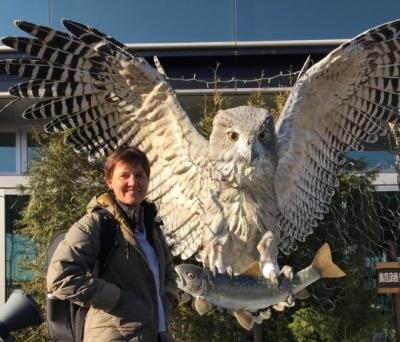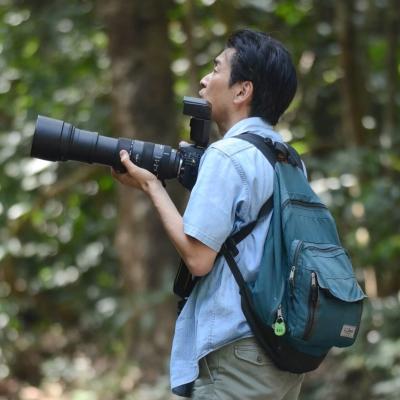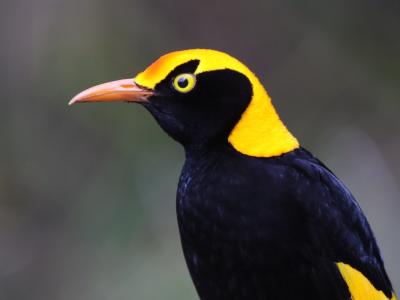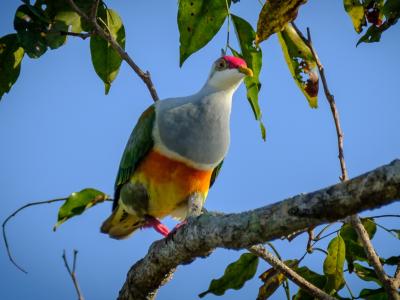Japan in Winter
-
Jan 6-20, 2025
Susan Myers and Koji Tagi
-
Jan 2026
Susan Myers and Koji Tagi
2026 Tour Price to be Determined
2026 Tour Price to be Determined
A visit to Japan in the winter is something birders everywhere should consider. The long chain of islands that make up Japan straddle the Pacific coast of Asia, providing an ideal wintering ground for some of the world’s most sought-after birds, and although the species list is modest, it contains some real gems and spectacular finds.
Our tour ranges from the southernmost of Japan’s four main islands, Kyushu, to the northernmost, Hokkaido. We’ll focus on the great spectacles, the crane concentrations (up to five species) in the south and the sea-eagle and seabird gatherings in the north, and on Japan’s endemic and near endemic residents, including Blakiston’s Fish-Owl, the world’s largest owl. We’ll also spend a few days in the interior of Honshu, the largest of the Japanese islands, birding some of the country’s best temperate woodland and visiting the famous “snow monkeys” near Nagano.
Japan is much more than just a birding destination—it’s a complete cultural event and one that is bound to captivate even a well-traveled birdwatcher. In some places we’ll stay in Japanese inns where we can gain insight into the traditional lifestyle, and everywhere we go the Japanese passion for order and neatness will be evident. And of course, there is also all that fascinating and delicious food to sample.
Day 1: We’ll begin this evening at Tokyo’s Narita Airport. Night at Narita.
This is a tour I have wanted to do ever since I read about it many years ago. It was even better than I expected. The hotels, the food, the birds, all were exceptional. And I ate things I never in my life thought I’d be willing to try, and liked them. Susan knows the country and the people. Her language fluency helped us to experience Japan in more intimate detail and made it personal. Who knew a Seven-11 in Japan could be such fun?! - Sandra J.
Day 2: We’ll start our birding this morning with a side trip to some nearby birding destinations, depending on what has been recently report in the area. We may try for the gorgeous Mandarin Duck, which is sometimes to be found along the edges of the small lakes. Other birds we might see include Eastern Spot-billed Duck, Varied, Japanese, and Long-tailed Tits, Brown-eared Bulbul, Oriental Turtle Dove, and White Wagtail. After lunch, we’ll continue our journey to Karuizawa, Japan’s playground of the rich and famous. It’s about a two hour drive but we should arrive before dark, so we should be able to fit in some birding before we head to our accommodation. Night in Karuizawa.
Day 3: Karuizawa has long been famous for its beautiful, temperate woodlands, and the area supports a rich selection of species in a relatively small space. As we explore the tracks and trails along the fast-flowing streams, we may encounter such species as Japanese Green Woodpecker, Brambling, the gorgeous but scarce Japanese Waxwings, Azure-winged Jay, Japanese Grosbeak, and, if we are really lucky, Pallas’s Rosefinch or the scarce endemic Copper Pheasant. Later in the day we’ll visit a small reservoir that often hosts a nice range of wildfowl, including the snappy Falcated Teal. Night in Karuizawa.
Day 4: We’ll depart early for the Japan Alps to see the fabled snow monkeys at Jigokudani— “Hell’s Valley” in English. Here we’ll see a troop of Japanese Macaques that have learned to use the natural hot springs during the harsh winter. After a walk of about an hour through snowy woods, we’ll be able to see the monkeys at very close range bathing in the springs or playing nearby, and the photographic opportunities will be superb. We may see a few birds, perhaps a Brown Dipper or a Goldcrest, although this isn’t our focus this morning. Later we’ll continue to Matsumoto, a city renowned for its magnificent castle and excellent nearby birding opportunities. We should have time in the afternoon to visit a birding site to the south of the city that’s a great place to find the scarce Pallas’s Rosefinch. Night in Matsumoto.
Day 5: This morning we’ll visit the Matsumoto Castle. Considered to be one of three great Japanese castles (along with Kumamoto and Himeji), Matsumoto-jo dates from the 1500s when it was built in the Sengoku Period, otherwise known as the “warring states period” a time of great conflict and social upheaval. It is fascinating to explore the various levels and the keep, and as a bonus we may find Japanese Waxwings, amongst others, in the gardens. In the afternoon, we’ll fly south to Kyushu, the southernmost of the main Japanese islands and drive south from Fukuoka to Yatsushiro.
Day 6: This morning we’ll head to the nearby Yatsushiro mud flats (dependent on tide times), an area famous for its wintering Black-headed and the sought-after regional endemic Saunder’s Gull. Waders, gulls, ducks, spoonbills, and herons abound here so we’ll spend some time searching for the likes of Ruddy-breasted Crake, Common Shelduck, and Great Crested Grebe. Driving a bit further south, by the afternoon we’ll be marveling at the spectacle of tens of thousands of cranes, representing up to five different species. The most common species here are the White-naped and Hooded, but small numbers of Common and Sandhills can usually be found amongst them, and there is even a slim possibility of rarities such as Siberian or a Demoiselle! Searching nearby fields, estuaries and reed beds we may also find Black-faced Spoonbill, Long-billed Plover, Crested Kingfisher or Chinese Penduline Tit. Night in Izumi.
Day 7: We’ll leave at dawn to watch the sun rise over the Arasaki Crane Center and the spectacle of thousands of cranes flying overhead and feeding in the fields. Around the Crane Center birds such as Northern Lapwing, Bull-headed Shrike, Daurian Redstart, Dusky Thrush and Oriental Greenfinch are often present, and there are usually large flocks of Rook, Carrion, and Large-billed Crows and Eurasian Tree Sparrows, the latter often containing a few Russet Sparrows. The area around Arasaki abounds with bird life: the farmlands and reedbeds can attract Oriental and Eurasian Skylarks, Chinese Penduline Tit, and Common Reed Bunting; the estuaries may contain flocks of Eurasian Teal and Common Pochard; the coastal scrub is favored by Pale Thrush, Japanese Bush Warbler, and Masked and Meadow Buntings; and every residential area is likely to harbor Eastern Buzzard and Warbling White-eye.
Day 8: We’ll drive over the coastal mountains, or via the coast (depending on weather conditions), to the Kirishima-Yaku National Park, a fascinating region of active volcanoes and hot springs.
We’ll spend some time around Lake Mi-ike, a circular lake about half a mile in diameter surrounded by lush broadleaf forest, fast-flowing streams, and mountains. Many of Japan’s more common woodland birds occur here plus scarcer specialties such as Copper Pheasant (very rare), White-bellied Green-Pigeon, and White-backed Woodpecker although these are all long shots. The lake may have a number of waterbirds, possibly including large numbers of Eurasian Wigeon. We’ll visit a small shrine on a hilltop overlooking the lake where we’ll explore the grounds in search of various woodland species and experience the beauty of the traditional Shinto architecture. In the late afternoon, we’ll drive east to the coastal town of Hyuga, and if time permits we’ll stop en route at a small, seemingly insignificant lake that provides a backup location for Baikal Teal and Falcated Duck, and usually the astonishingly beautiful Mandarin Duck. With luck we may also find the stunning Yellow-throated Bunting or Olive-backed Pipit in the surrounding forest. Night in Hyuga.
Day 9: This morning we’ll drive north to the port town of Kadogawa where we’ll take a boat out of the harbor to look for Japanese Murrelets. They will have just regained their breeding plumage and with luck we may see several twittering pairs. We’ll also look for other birds onshore such as Japanese Cormorant, Eastern Reef and Little Egrets, and Black-tailed and Slaty-backed Gulls. Later we’ll visit local woodlands and meadows in search of Japanese Wood Pigeon, Blue Rock Thrush and possibly scarce wintering species such as Brown Shrike. In the late afternoon we’ll drive south to the city of Miyazaki for our flight to Haneda in the evening. Night in Haneda.
Day 10: We’ll catch an early morning flight to Kushiro in Hokkaido. Once there we’ll drive two hours to Nemuro on the east coast of Hokkaido, stopping at Kiritappu for some birding en route. Night in Nemuro.
Day 11: We’ll plan on a boat trip off the Nemuro Peninsula looking for alcids such as Spectacled Guillemot and Ancient Murrelet. We’ll see our first White-tailed and Steller’s Sea-Eagles and there will be a few Pelagic Cormorants and hundreds of Black Scoters and Harlequin Ducks in the waters. Gulls will be numerous and now include Glaucous, Glaucous-winged and Common (Kamchatka) among the many Slaty-backed and Black-tails. If the weather is bad we can achieve almost the same results from the lighthouse at the tip of the peninsula where an enclosed viewing station gives protected views of the surrounding waters.
After a warming lunch at a restaurant overlooking eagles and kites resting on a frozen lake, we’ll visit various other birding sites scattered around the peninsula where we might find Rock Sandpiper or Asian Rosy Finch. If we can access them, we can try the feeders at a small sanctuary in town which might attract Great Spotted Woodpecker, Marsh Tit and perhaps Hawfinch. Night in Nemuro.
Day 12: After a final morning in the Nemuro area we’ll drive north to the Shiretoko Peninsula in Hokkaido’s northeast. En route we’ll take a detour out onto the remarkable Notsuke Peninsula, a 17 mile-long narrow sandbar that has been designated a wildlife preserve and is a haven for seabirds. At nearby Odaito we’ll stop to see the congregations of Whooper Swans and other wildfowl. Many of the birds will be the same as yesterday but we may find something new, such as Stejneger’s Scoter. Night in Rausu.
Day 13: Steller’s Sea-Eagles are numerous on the Shiretoko Peninsula, and our time with these splendid birds will be one of the highlights of the tour. If the pack ice has descended as far south as Hokkaido, we’ll take a boat trip out of the Rausu harbor along the length of the southern edge of the peninsula to see large concentrations of eagles close up.
Hokkaido is also renowned as the breeding area for one of Japan’s most impressive residents, Blakiston’s Fish-Owl. However, finding one is no easy proposition—there may be as few as 20 breeding pairs on the entire island—but this afternoon we’ll drive to a small village where we’ll have a chance of seeing one. We’ll stay at a traditional Japanese Inn where a pair is known to visit the stream behind the lodging. After what has in the past been the most wonderful Japanese meal of the tour we’ll retire to await the owls. There is a possibility of some other great birds here, too – notably the usually elusive Solitary Snipe that, with luck, may be seen foraging in the stream.
Our inn also has delightful natural hot springs with both indoor and outdoor pools, including our favorite, a little rocky pool by a stream where immersed in 104 degree water and surrounded by snow one can watch for Eurasian (Brandt’s) Jay, Marsh Tit, Northern Long-tailed Tit, and Brown Dipper. Night at Yoroushi.
Day 14: We’ll drive this morning to Tsurui, or “the Red-crowned Crane place,” and in the afternoon have our first looks at the impressive and rare Red-crowned Cranes, which at more than five feet tall are the most magnificent of the world’s cranes. The same area hosts a number of other special birds—we might see Whooper Swan, Eurasian Nuthatch and just possibly Eurasian Bullfinch. We’ll return to the inn tonight for another look at Blakiston’s Fish Owl. Night in Yoroushi.
Day 15: This morning we’ll return to Kushiro (with the chance to say goodbye to the cranes en route) for our flight back to Tokyo’s Haneda Airport where the tour concludes late this afternoon.
Note: The information presented below has been extracted from our formal General Information for this tour. It covers topics we feel potential registrants may wish to consider before booking space. The complete General Information for this tour will be sent to all tour registrants and of course supplemental information, if needed, is available from the WINGS office.
ENTERING JAPAN: A passport valid for your length of stay in Japan and with at least one blank page for an entry stamp is required of United States citizens wishing to enter Japan. U.S. citizens are not required to have a visa for stays of less than 90 days.
Citizens of other countries should check with their consulate/embassy for instructions.
COUNTRY INFORMATION: You can review the U.S. Department of State Country Specific Travel Information here: https://travel.state.gov/content/travel.html and the CIA World Factbook here: https://www.cia.gov/the-world-factbook/. Review foreign travel advice from the UK government here: https://www.gov.uk/foreign-travel-advice and travel advice and advisories from the Government of Canada here: https://travel.gc.ca/travelling/advisories.
PACE OF THE TOUR: Our birding normally begins relatively late, about 8 am, due to late sunrises and very cold early mornings when bird activity is also very low. We’ll then bird mostly in the warmer and brighter parts of the day, with quick, on the run lunches from convenience stores, which have a big variety of excellent products (not at all like convenience stores in other countries!). Bird activity usually drops off markedly by 3:00 pm. There are some drives of three to four hours, and five internal flights. Most of the driving is on well-surfaced roads but going can be slow in bad weather. This tour is not strenuous. The longest walk will be at Jigokudani and Karuizawa; both of about an hour on possibly snowy trails. There are some modest inclines and several sets of steps as it is a hilly area. Otherwise our walking is fairly easy, on flat terrain with plenty of stops for birding, and we’ll often bird close to the vehicle. It is however very cold and snowy in the north and often in the central Honshu area, as well, with minimum temperatures of about -10C (15F), and sometimes lower.
HEALTH: The Centers for Disease Control and Prevention (CDC) recommends that all travelers be up to date on routine vaccinations. These include measles-mumps-rubella (MMR) vaccine, diphtheria-tetanus-pertussis vaccine, varicella (chickenpox) vaccine, polio vaccine, and your yearly flu shot. No vaccinations are required unless you are coming directly (within five days of departure) from an area with cholera and/or yellow fever.
They further recommend that most travelers have protection against Hepatitis A. Please contact your doctor well in advance of your tour’s departure as some medications must be initiated weeks before the period of possible exposure.
The most current information about travelers’ health recommendations can be found on the CDC’s Travel Health website here: https://wwwnc.cdc.gov/travel/destinations/list
Weather: It might be very cold, especially in Hokkaido. Be sure to have warm clothing including boots, hat and gloves. A pair of traction devices for your boots is strongly recommended as conditions can sometimes be very icy especially in parking lots and the like.
Smoking: Smoking and vaping is prohibited in the vehicles or when the group is gathered for meals, checklists, etc. If you are sharing a room with a nonsmoker, please do not smoke in the room. If you smoke in the field, do so well away and downwind from the group. If any location where the group is gathered has a stricter policy than the WINGS policy, that stricter policy will prevail.
Miscellaneous: In this ultra modern, first world country, all water including tap water is potable and you can safely consume salads, fresh fruit and vegetables.
CLIMATE: At the time of our visit, it will be cool to very cold, especially along the coast. There will be snow and ice in Hokkaido where the average minimum temperature at this time of year is -10 C (15 F) and the average maxima -3C (25 F). Elsewhere the maxima and minima are somewhat higher, Kyushu in the south being the warmest with an average top temperature of 12C (53F).
ACCOMMODATIONS: Accommodation varies from Western-style hotels to more traditional Japanese inns. Be prepared for smaller rooms than one finds in North America. Bathrooms are generally very small. In Japan one removes one’s shoes when entering houses, traditional hotels (not Western hotels), temples and many other places. Slippers are often provided but most are too small for western feet, especially men’s feet.
Several of our accommodations have natural hot springs, although swimsuits are NOT to be worn in these.
Internet access: Wi-Fi access in our various accommodations is variable. We will find it at most of our hotels and lodges. It is now possible to purchase a pre-paid SIM card on arrival. Your phone may be incompatible with the local system, so please check with your carrier.
FOOD: The food in Japan is often memorable. It is varied, fresh, and delicious, and the presentation is often delightful. You’ll find yourself wanting to photograph many of your meals! One of the specialties of Japan, and especially in Hokkaido, is the seafood. If you don’t like fish however, there are other choices. Vegetarian options are somewhat limited but by no means out of the question, although this is a strange concept to most Japanese so please be patient and understanding. Most meals are served with a meat and a seafood dish, as well as miso soup and a salad. We’ll experience a mix of Japanese and western style meals throughout. Lunches will often be eaten on the run as daylight birding time is limited and we’ll buy tasty sandwiches or heated lunchboxes (bento) of your choice at local convenience stores. Hearty breakfasts usually consist of coffee, toast, and varied small salads but sometimes are more traditional.
Food Allergies / Requirements: We cannot guarantee that all food allergies and choices can be accommodated at every destination. Participants with significant food allergies or special dietary requirements should bring appropriate foods with them for those times when their needs cannot be met. Announced meal times are always approximate depending on how the day unfolds. Participants who need to eat according to a fixed schedule should bring supplemental food. Please contact the WINGS office if you have any questions.
TRANSPORTATION: We’ll be traveling in a 10 seat, air-conditioned mini-bus throughout, driven by your leader. Participants should be able to ride in any seat in tour vehicles and are expected to change seats with others daily.
2024 Narrative
In Brief: Our winter tour in Japan this year featured the usual array of fantastic birds – the incredible numbers of cranes, wildfowl and eagles never fail to impress. And then there are some special rarities such as Japanese Murrelet and Blakiston’s Fish Owl, that can only realistically be seen in this country that counts so many of their birds as National Treasures, an official title. We were also lucky this year to have encounters with a number of species that we hope for but can’t count on, of note the Japanese Waxwings, Baikal Teal, Stejneger’s Scoter, Green Pheasant, and Siberian Crane.
In Detail: We started our winter birding in Japan with a visit to two wetland sites. At Kasumigaura we were hoping for a somewhat out of season sighting of the restricted range Marsh Grassbird. Sadly, it was only heard but we still had a good start to our birding with good numbers of wildfowl, grebes, and other waterbirds, as well as our first Dusky Thrushes, Oriental Greenfinches and Meadow Buntings. At the heart shaped Watarase Reservoir we were delighted to find good numbers of smart Smew, and best of all, our hoped for Long-tailed Rosefinches feeding in seeding trees in the car park, the males looking lovely in their snappy pink plumage.
Our explorations of various sites in the Karuizawa area kicked off at a small, but always rewarding, neighbourhood shrine. Two highlights here were our hoped for Japanese Green Woodpecker, and a little group of Japanese Waxwings feeding in the fruiting mistletoes overhead. Saku Reservoir was also great, albeit a little cold! Falcated Teal, Smew and Japanese Wagtail were welcome additions to our list of sightings, but the Long-billed Plovers were an even better surprise. Explorations of the Wild Bird Forest yielded Japanese Pygmy Woodpecker, Coat and Varied Tits, and of course the ubiquitous Brown-eared Bulbuls. In the Hotchi Fields south of the town we added some more great birds, including Bull-headed Shrike, big numbers of Oriental Greenfinches, some very nice Rustic Buntings, and best of all – a fabulously showy male Green Pheasant! The Green Pheasant is the national bird of Japan, the kokucho. The Green Pheasant was mentioned in Japan’s oldest history books, in both the Nihonshoki and the Kojiki, which were published in the 8th century. It is said that it was the messenger of Amaterasu, the ancient sun goddess, the highest deity in Japanese mythology.
Due to the earthquake that occurred just prior to our arrival in Japan, we were forced to change our plans somewhat. So, after our visit with the so-called Snow Monkeys (really Japanese Macaques), we proceeded southwards to the city of Matsumoto, famous for its beautiful castle. Considered to be one of three great Japanese castles (along with Kumamoto and Himeji), Matsumoto-jo dates from the 1500s when it was built in the Sengoku Period, otherwise known as the “warring states period” a time of great conflict and social upheaval. It was fascinating to explore the various levels and the keep, and as a bonus we found more Japanese Waxwings in the gardens.
From Matsumoto we flew out of Honshu, Japan’s main island, to the more sedate but economically important island of Kyushu. After touching down in Fukuoka, the largest city on the island, we beat a hasty retreat and headed south to the quieter city of Yatsushiro. Explorations of the Kuma River Estuary turned up some great birds, notably tern-like Saunder’s Gull, an impressive Eurasian Goshawk, a smart little Chestnut-eared Bunting, and best of all, a little active group of Chinese Penduline-tits feeding in the reed heads.
Leaving Yatsushiro, we again headed south to one of the most anticipated destinations of our tour – the home of Japan’s cranes, Izumi. Here we marvelled at the sight of thousands and thousands of Hooded and White-naped Cranes, with a few Common, Sandhill and Siberian Cranes thrown in for good measure. On top of this the incredible numbers of Rooks, waterfowl, shorebirds and others make this mostly rural area a truly remarkable birding heaven. A side visit to a superb forest reserve, the Kogawa Dam, was fun and fruitful. The highlight here was, of course, the incredible Mandarin Duck, found in good numbers here. What a bird! A surprise, and very welcome, find was a small group of shy Baikal Teal, not to mention a pair of rare Grey Buntings. Leaving Izumi, we made a quick stop at the small town of Satsuma where a little riverside park is always great for the scarce Long-billed Plover.
On our way to Kyushu’s east coast, we stopped in at a spectacular crater lake where we were rewarded with Ryukyu Minivets, Long-tailed Tits, Eurasian Nuthatches, Daurian Redstarts, and a Pale Thrush.
In the relatively balmy climes of Miyazaki Prefecture, we enjoyed a picturesque and adventure filled couple of hours on the water in search of the tiny and cute Japanese Murrelet, the world’s rarest alcid. And just as we were about to give up hope, up they popped! We were able to spend a bit of time with them, from a respectful distance, as they repeatedly dived and resurfaced. Another of many trip highlights!
Next, we braced ourselves as we headed northwards to Hokkaido, the Siberia you go to when you’re not going to Siberia. And yes, it certainly was cold, but to our surprise (or mine at least) not nearly as cold and deep in snow as usual. We hit the ground running, heading straight to Cape Kiritappu and Hamanaka Port. This proved to be a brilliant start to our Hokkaido sojourn with our first sightings of White-tailed Eagles, Harlequin Ducks, Red-breasted Mergansers, Slaty-backed Gulls, and Pelagic Cormorants. At the cape, we almost got beaten back by the cold and wind, but Red-necked Grebes, Spectacled Guillemots, and Asian Rosy-Finches proved irresistible.
Thanks to a serendipitous chance meeting with an acquaintance, I was able to arrange a visit to his new feeding station hidden away in a remote part of the Nemuro Peninsula. This proved to be an absolute bonanza! Three hours was well spent here with visits to the feeders from all sorts of neat birds – Japanese Pygmy and Great Spotted Woodpeckers; Coal, Marsh, Willow, Varied and Japanese Tits; super cute Long-tailed Tits; and Eurasian Nuthatches.
A morning at the Swan44 Roadside Station in hopes of sighting of the incredible Steller’s Sea Eagle started slowly but thanks to the fisherman, who dump their bycatch on the ice, we thrilled to the sight of these magnificent birds squabbling with the crows and the White-tailed Eagles over the scraps. The only way to describe Steller’s Sea Eagle is incredible!
Our last adventure on the Nemuro Peninsula was our nature cruise out of Habomai Port. As we tracked along the southern coast of the point, we encountered good numbers of Common Murre and Spectacled Guillemots, and one Pigeon Guillemot. As expected, Harlequin and Long-tailed Ducks were in good numbers, and a small group of Stejneger’s Scoters was a very sight.
Sadly, our nature cruise out of Rausu was cancelled but this wasn’t a huge disaster – we still enjoyed some memorable birding as we explored the fishing ports that dot the coast and kindly allow unlimited public access. A side trip out on the unusual Notsuke Peninsula turned up more great wildlife sightings in the form of huge numbers of Sika Deer, the endearing Hokkaido Red Fox, many, many wildfowl and gulls, and best of all a simply huge flock of flighty Common Redpoll, not at all common in Japan.
We finished off our tour of Japan and its birds with a big finale in the form of the world’s largest owl and the world’s most (arguably) beautiful and heaviest crane. The added bonus was the superb accommodation at Yuyado Daiichi, a Japanese inn which features a stunning lobby area dominated by an outdoor feeder, incredible cuisine and stunning artwork throughout the building. After an afternoon watching the Hokkaido Jays, Eurasian Nuthatches, woodpeckers and tits working the feeder, we settled in a dusk to await the hoped for arrival of the resident Blakiston’s Fish Owl. She proved to be a little reticent this time, but some lucky and persistent folk were able to see this magnificent bird in all its glory from the warmth of the inn’s lobby.
Next, we headed to Tsurui, the characters of this name literally mean “the crane place”, and an appropriate name it is. We spent time with the hundred or more stately Red-crowned Cranes as they danced, squabbled and fed in the snow covered fields. What a sight! A breathtakingly beautiful end to a very memorable tour. Many thanks to a great group for a most enjoyable birding, cultural and gourmet tour of this amazing country, my second home!
- Susan Myers
I thoroughly enjoyed touring with Susan. The mix of birds, wildlife and culture was perfect. I benefited greatly from Susan's knowledge of Japan, its people, wildlife, culture, and history.
- Keith K. on Japan in Winter
Susan knows the country and the people. Her language fluency helped us to experience Japan in more intimate detail and made it personal.
- Sandra J. on Japan in Winter
This is a tour I have wanted to do ever since I read about it many years ago. It was even better than I expected. The hotels, the food, the birds, all were exceptional. And I ate things I never in my life thought I’d be willing to try, and liked them. Susan knows the country and the people. Her language fluency helped us to experience Japan in more intimate detail and made it personal. Who knew a 7-11 in Japan could be such fun?!
- Sandra J. on Japan in Winter
Maximum group size six participants with one leader; 10 participants with two leaders.


























